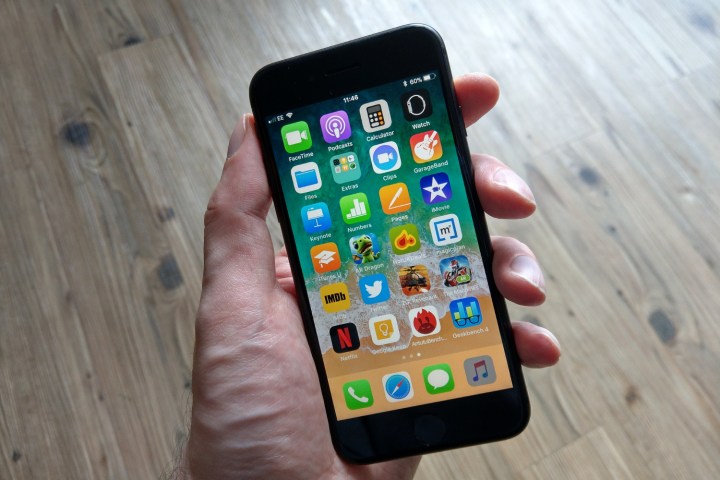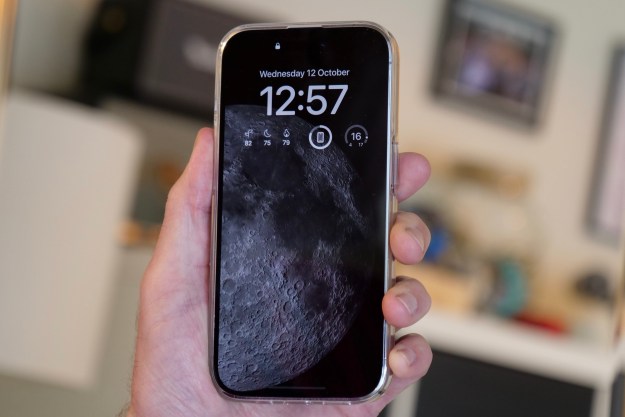The very first iPhone shipped with either 4GB, 8GB, or 16GB, and by today’s standards, that’s barely a sliver. We’re now downloading movies, TV shows, music, and packing our phones with nearly every app under the sun because we can. We need space and we need lots of it.
The latest iPhone 12 and its variants pack 64GB, 128GB, or 256GB of storage. Compared to the original, that’s an insane amount. But eventually, you’ll need to clean out that massive digital house to make room for all the new stuff you want to move in. This guide shows you how to free up space on your iPhone.
Check your remaining amount
To see where you stand regarding overall storage space, do the following:
Step 1: Tap to open Settings.
Step 2: Tap General.
Step 3: Tap iPhone Storage.
Here you’ll see a color-coded bar graph showing what is consuming the phone’s space, including apps, media, the operating system, and so on. In the case of a brand new iPhone 12 Pro Max we used for this guide, iOS 14.3 eats 7.16GB of the phone’s 128GB alongside 6.88GB of mysterious “other” data. We’ll get to the latter shortly.
You’ll also see tools for offloading unused apps, reviewing large attachments, and a complete list of all installed apps with the largest at the top. This is where we’ll start.
Remove the apps you don’t need

Keep in mind that certain apps aren’t necessarily big. For example, if OneDrive is using 7GB of space, it’s not the app itself hogging your phone’s storage but rather all the data you downloaded within for offline use. In this case, you’ll need to open OneDrive and manually delete all offline content to reduce the app’s overall size on your phone.
Other apps are just big in general, like Oceanhorn 2 using 2.66GB — it even saves an additional 397MB to your device, as shown above. Final Fantasy 15 Pocket Edition weighs at a smaller 903MB. If you want to remove these apps from your iPhone, here’s how:
Step 1: Tap to open Settings.
Step 2: Tap General.
Step 3: Tap iPhone Storage.
Step 4: Tap the App you want to remove.
Step 5: Tap Delete App on the following screen.
Step 6: Tap Delete App again on the roll-up menu to confirm.
Step 7: Rinse and repeat for all other apps.
Note: If you tap Offload App instead, as shown in the screenshot above, the app will be removed but its related data will stay on your phone. Otherwise, Delete App will remove everything, even saved data.
Another flag to look for on this list is apps that say Never Used. You should remove them from your phone if you never plan to use them. More importantly, enabling Offload Unused Apps will remove unused apps when you’re running out of storage, but keep all the related documents and data untouched.
If you’re looking for additional options, check out our guide on how to delete iPhone apps.
Limit the size of photos and videos
Your photos and videos captured with the phone are likely taking up a lot of space. While it’s a shame not to take full advantage of your camera’s cool features, turning some of those features off may clear up some much-needed space.
Turn off Live Photos
Each Live Photo is a three-second video, not a photo. This makes each shot slightly larger file-wise. To temporarily turn this feature off and save space, tap the Live Photos button located in the top right corner of the Camera app. It resembles a bullseye.
If you want to permanently disable Live Photos, do the following instead:
Step 1: Tap to open Settings.
Step 2: Scroll down and tap Camera.
Step 3: Tap Preserve Settings.
Step 4: Tap the Toggle next to Live Photo to turn this feature off.
Disable dual copies when using HDR
Photos look better with HDR flipped on, but on older iPhones, that means keeping two copies by default: One with HDR and one without. If you want to use
Step 1: Tap to open Settings.
Step 2: Scroll down and tap Camera.
Step 3: Tap the Toggle next to Keep Normal Photo.
Note: You won’t see this option on phones with Apple’s A12 Bionic chip and newer. These devices have Smart
Reduce video framerate and resolution
You should avoid recording 4K or slow-motion video if you have limited space, as both will use a lot of storage compared to ordinary video. Reducing the resolution and frame rate will help, as this creates smaller video files. Here’s how:
Step 1: Tap to open Settings.
Step 2: Scroll down and tap Camera.
Step 3: Tap Record Video and adjust the setting accordingly. You can also toggle off
Step 4: Go back to Camera and tap Record Slo-Mo.
Step 5: Adjust the setting accordingly.
Back up to the cloud
A better way to cope with storage-hungry photos and videos is to back them up in the cloud. This allows you to remove these files from your iPhone and still have immediate near-local access. In this section, we use the native iCloud platform although OneDrive, Google Photos, and Dropbox work well too.
Step 1: Tap to open Settings.
Step 2: Tap on your Apple ID.
Step 3: Tap iCloud.
Step 4: Tap Photos.
Step 5: Verify that iPhone Photos is toggled On.
Step 6: Verify that Optimize Phone Storage is Checked. This will replace your photos with optimized versions on your phone while storing the full-resolution versions in the cloud you can download at any time.
We recommend OneDrive if you’re using a Windows PC, and Google Photos if you have a Chromebook. Consult our roundup of the best free cloud storage apps for more ideas.
Stream music and movies
Forget about downloading music, TV shows, or movies. Use streaming services instead.
Spotify and Netflix are our favorites, but there are loads of other options. Apple Music and SoundCloud are great for music lovers, while Amazon Prime Video, Hulu, and HBO Max make the perfect companion for those looking for movies or TV.
If you use these services when you’re out and about, just make sure that you keep an eye on your data usage.
Delete old messages and attachments
Attachments in your messages take up local space. One way to keep it all to a minimum is to lock down the number of days your messages will remain on the phone. You can adjust this setting by doing the following:
Step 1: Tap to open Settings.
Step 2: Scroll down and tap Messages.
Step 3: Tap Keep Messages listed under Message History.
Step 4: Select 30 Days, 1 Year, or Forever on the following screen. If you select a duration that’s shorter than your current setting, like switching from Forever to 30 Days, for example, you’ll see a prompt to delete messages older than 30 days.
If you’d rather just delete attachments without adjusting the message lifespan, there’s a tool for that as we saw earlier in this guide:
Step 1: Tap to open Settings.
Step 2: Tap General.
Step 3: Tap iPhone Storage.
Step 4: Tap Review Large Attachments.
Step 5: Tap Edit located in the top right corner.
Step 6: Tap each Attachment you want to remove from your phone.
Step 7: Tap the Trashcan icon located in the top right corner.
Purge unnecessary files
If you have old documents, videos, or other files on your iPhone that you can live without, it’s time to get rid of them. Again, be sure to open apps you used to download files to your phone, like OneDrive or Google Drive. Do you read books in the Kindle app? Delete all downloaded books if you’re done reading.
Be sure to open the Files app too and delete anything you downloaded and no longer need, like PDFs. However, if you see a “cloud” icon on the file’s thumbnail, it’s already backed up into the cloud and isn’t sitting on your iPhone.
Turn off automatic downloads
One way to prevent your iPhone from quickly running out of space is to disable automatic downloads. However, this currently only applies to apps and music — there is no way to block automatic downloads of video and books.
Step 1: Tap to open Settings.
Step 2: Tap App Store.
Step 3: Tap the Toggle next to Apps under Automatic Downloads to turn this feature off (if it’s not already).
Step 4: This is optional but will help regain space. Tap the Toggle next to Offload Unused Apps to automatically remove apps you don’t use.
Note: For the App Store, we recommend keeping the App Updates setting toggled On so your phone stays up to date and doesn’t miss out on needed bug fixes and feature improvements.
Step 5: Return to the main Settings menu and tap Music.
Step 6: Scroll down and tap the Toggle next to Automatic Downloads listed under Downloads.
Clear browser cache
Your browsing history and website data build up over time, but it’s easy to remove. Here’s how:
Step 1: Tap to open Settings.
Step 2: Scroll down and tap Safari.
Step 3: Scroll down and tap Clear History and Website Data.
Step 4: Tap Clear History and Data on the roll-up menu.
What about that “other” storage?
We see the same problem in MacOS: The operating system throws all data it can’t categorize under the “other” label. Problem is, you’ll have a hard time trying to figure out what data stands under that vague umbrella. Moreover, it’s likely rather large — a “normal” size ranges from 5GB to 10GB.
There’s no easy way to clear it all out, unfortunately. It contains caches from
Again, we suggest skimming through the app list on the iPhone Storage screen, tapping the larger apps, and looking at their Documents & Data information. This will help reveal the apps that contain files in the “other” category that you can do away with.
You can always get all of your out-of-the-box storage back with this very extreme measure …
Restore your iPhone
This should be your last resort, honestly. If you’ve worked through all our space-saving tips on your iPhone and you’re still short of space, this will definitely get the job done. There will still be a few things left in that “Other” category we talked about, but it will be minimal. However, be sure your iPhone is backed up, whether it’s to the iCloud or another PC, before starting your iPhone down the reset path.
Here’s how to reset:
Step 1: Tap to open Settings.
Step 2: Tap General.
Step 3: Scroll down and tap Reset.
Step 4: Tap Erase All Content and Settings.
Step 5: Tap Backup Then Erase on the pop-up window. However, if you have iCloud Backup toggled on, chances are you already have a fresh backup in the cloud and you can tap Erase Now instead.
We have two additional articles to check out if you still need help resetting your iPhone, namely, how to factory reset your iPhone and how to reset an iPhone.
Editors' Recommendations
- Best refurbished iPhone deals: Get an iPhone 14 for $513
- An Apple insider just revealed how iOS 18’s AI features will work
- The most common Skype problems and how to fix them
- iPhone SE 4: news, rumored price, release date, and more
- The 6 best tablets for kids in 2024
































